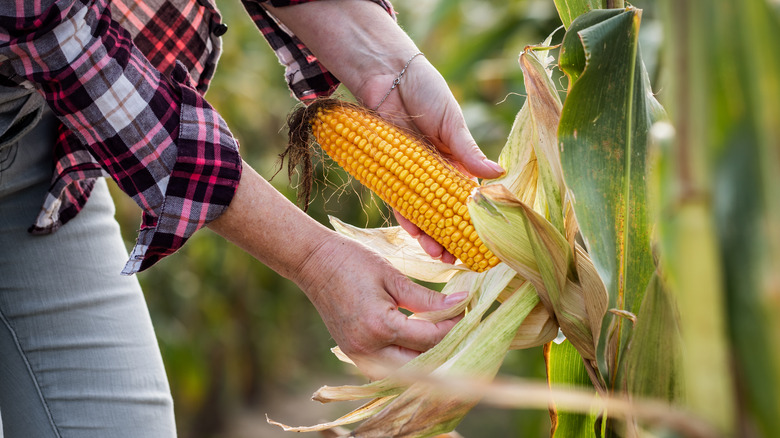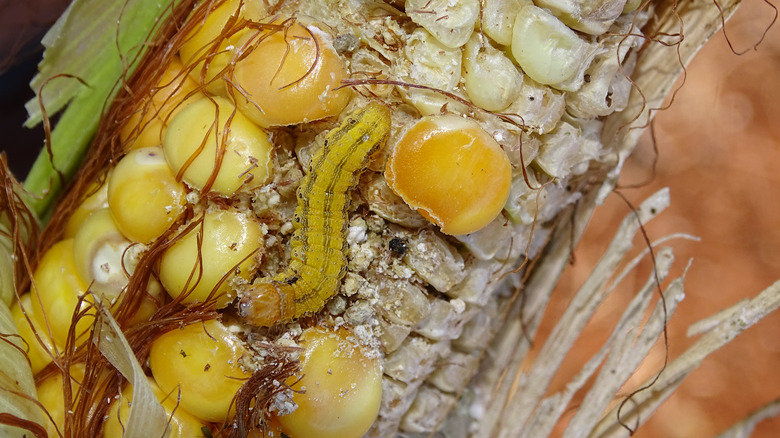Why It's Risky To Grow Tomatoes And Corn Side By Side
Planting a fruit and veggie garden means getting exclusive access to your favorite produce without having to pay for it or worry about how organic they are. Some gardeners like to pack together as many different species of plants as possible in their yard to maximize space. While some plants make good companions, it's important to know that not all fruits and veggies can be grouped without consequences. For our corn and tomato lovers, this plant pair shouldn't grow next to each other. Corn may be easy enough to grow and take care of on its own but planting it too close to tomatoes is pretty risky and could result in a huge loss as well as time wasted. This is because tomato and corn plants share common pests that could devastate their yield.
Tomatoes and corn are different plants in so many ways, but where they intersect is in the garden pests they attract. It's never a good idea to place plants that can be attacked by the same pests together. For tomatoes and corn, certain moths can't seem to get enough of them. If you plan on having both of these food crops in your garden, you'd do well to space them out as far as possible to avoid grave disappointment.
Pests and fungi can easily move from tomato to corn plants if they're close by
Tomato plants are typically preyed upon by tomato fruitworms, also known as cotton bollworms and corn earworms (Helicoverpa zea). These moth larvae are believed to be the most economically damaging pest in North America. These worms are so efficient that just one of them can destroy around four tomato fruits before it turns into a moth.
If you have corn nearby, these worms won't hesitate to terrorize them either. When these pests are found in corn, they are known as corn earworms and feed on various parts of the corn plant including the leaves and the ear. To prevent this worm from leveling your plants, space the corn and tomatoes apart as far as you can — opposite sides of the garden sounds like a good start. You can also use pyrethroid insecticides if you feel it's necessary.

